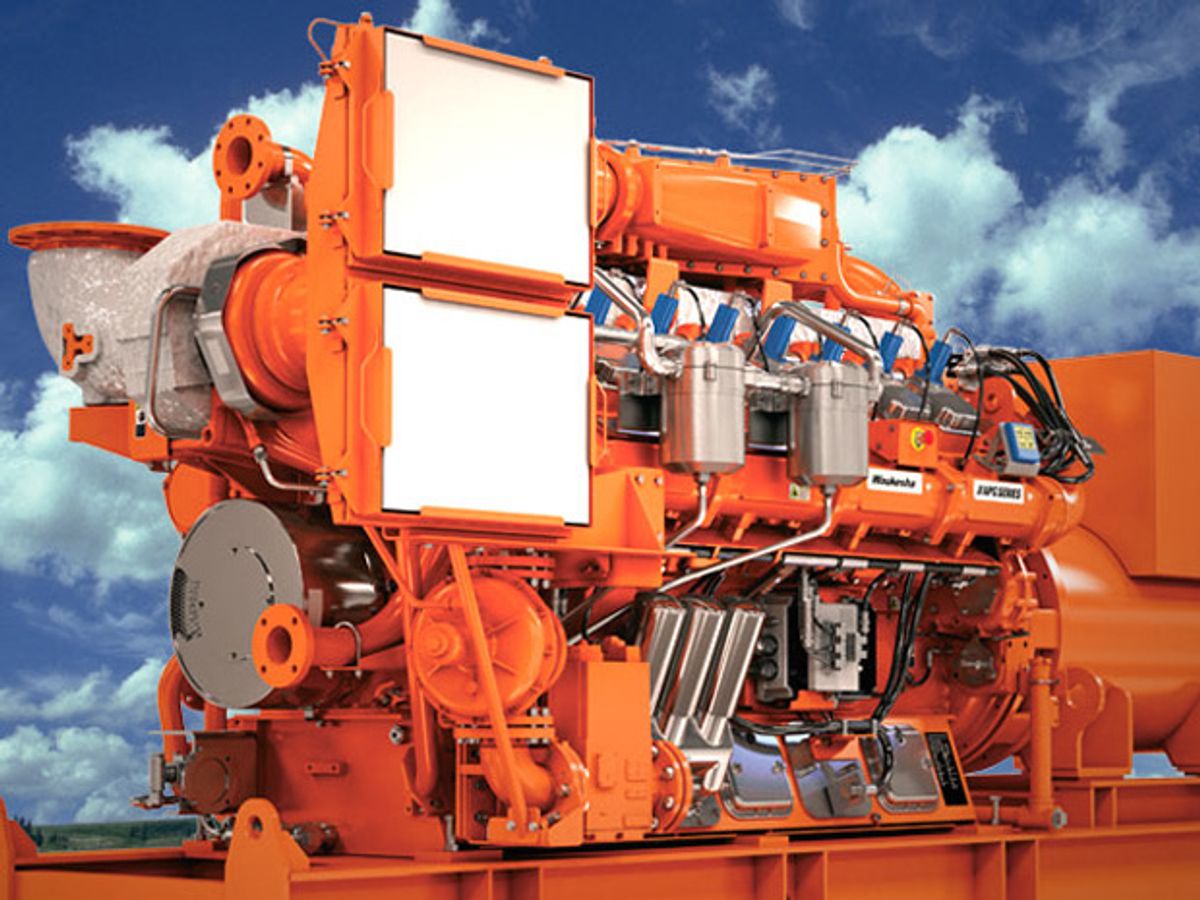General Electric is working on an efficient distributed power system that combines proprietary fuel cell technology with its existing gas engines [like the one in the photo].
The company's research organization is developing a novel fuel cell that operates on natural gas, according to Mark Little, the director of GE Global Research and chief technology officer. When combined with an engine generator, the system can convert 70 percent of the fuel to electricity, which is more efficient than the combined cycle natural gas power plants powering the grid.
The fuel cell will generate electricity from reformed natural gas, or gas that's treated with steam and heat to make hydrogen and oxygen, he says. Residual gases from the fuel cell process—a "synthesis gas" that contains carbon monoxide and hydrogen—would then be burned in a piston engine to generate more electricity. The waste gas that comes from the fuel cell needs to be specially treated but “we know we can burn these things. They’re well within the fuel specs of our current engine,” Little says.
This distributed power system could provide electricity to a small industrial site or a data center, for example. It would replace diesel generators that are often used to power remote locations or bring electricity to places without a central grid.
GE sells engines from two companies it acquired, Austria-based Jenbacher and Wisconsin-based Waukesha. It has done its own research on solid oxide fuel cells, and in 2011, it invested in Plug Power, which makes fuel cells for homes and small businesses. But Little indicated that this distributed power system will use new fuel cell technology invented by GE and configured to work in tandem with GE's engines. “We have a real breakthrough in fuel cell technology that we think can enable the system to be distributed and yet work at a very high efficiency level,” he says.
Commercial customers are showing more interest in stationary fuel cells and natural gas generators because they can provide back-up power and potentially lower energy costs. GE's system, which is still a few years a way from commercial availability, will be aimed at customers outside of the United States, Little says. Because the United States has relatively cheap natural gas, the combined power generation unit is unlikely to be cost competitive with grid power there. However, the price for natural gas in many other countries is more than double that in the United States and the hybrid power generation unit will “compete beautifully,” Little says.
GE's hybrid fuel system is just one of many research efforts the conglomerate has underway to take advantage of unconventional oil and natural gas drilling. Among the projects now being considered at a planned research center in Oklahoma is a way to use liquid carbon dioxide as the fluid to fracture, or frack, wells, rather than a mixture of water and chemicals. The company is developing a hybrid locomotive engine that can run on both diesel and natural gas. And it is working on small-scale liquid natural gas fueling stations that could be placed along railroad lines.
In another effort, GE is developing sensors and software to make oil and gas wells smarter. Researchers are working on different types of photonic sensors that are able to withstand very high heat and pressure. These would be better than electronic sensors for gathering flow and fluid composition data within wells, according to GE researchers.
Image credit: GE



